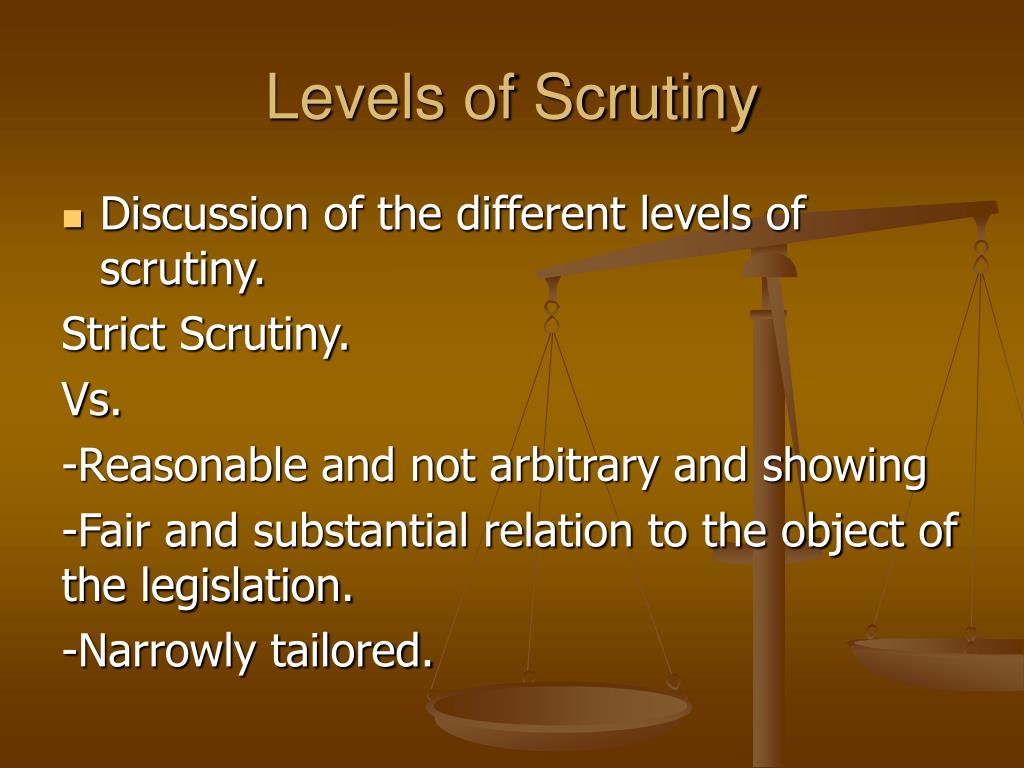


This test typically applies to all laws or regulations which are challenged as irrational or arbitrary as well as discrimination based on age, disability, wealth, or felony status.

The law or regulation is narrowly tailored to achieve its result.There is a compelling state interest behind the challenged policy, and.Strict scrutiny requires the government to prove that:

This high level of scrutiny is also applied whenever a “fundamental right” is being threatened by a law, like the right to marriage (Links to an external site.). Supreme Court has determined that legislation or government actions which discriminate on the basis of race, national origin, religion, and alienage must pass this level of scrutiny to survive a challenge that the policy violates constitutional equal protection (Links to an external site.). This is the highest level of scrutiny (Links to an external site.) applied by courts to government actions or laws. It also determines which party - the challenger or the government - has the burden of proof (Links to an external site.).Īlthough these tests aren’t exactly set in stone, here is the basic framework for the most common levels of scrutiny applied to challenged laws. The level of scrutiny that’s applied determines how a court will go about analyzing a law and its effects. When the constitutionality of a law is challenged, both state and federal courts will commonly apply one of three levels of judicial scrutiny. Notably, the Supreme Court has refused to endorse the application of strict scrutiny to gun regulations, leaving open the question of which precise standard of review is to be employed when addressing the Second Amendment.įor more on strict scrutiny, see this Catholic University Law Review article, this University of Vermont Law Review article, and this University of Pittsburgh Law Review article.Watch the Constitutional Scrutiny video first. Restrictions on content-based speech, for instance, are to be reviewed under the strict scrutiny standard as well. The application of strict scrutiny, however, extends beyond issues of equal protection. For a court to apply strict scrutiny, the legislature must either have passed a law that infringes upon a fundamental right or involves a suspect classification. Suspect classifications include race, national origin, religion, and alienage. Strict scrutiny will often be invoked in an equal protection claim. The other two standards are intermediate scrutiny and rational basis review. Strict scrutiny is the highest standard of review which a court will use to evaluate the constitutionality of governmental discrimination. Strict scrutiny is often used by courts when a plaintiff sues the government for discrimination. To pass strict scrutiny, the legislature must have passed the law to further a "compelling governmental interest," and must have narrowly tailored the law to achieve that interest. Strict scrutiny is a form of judicial review that courts use to determine the constitutionality of certain laws.


 0 kommentar(er)
0 kommentar(er)
